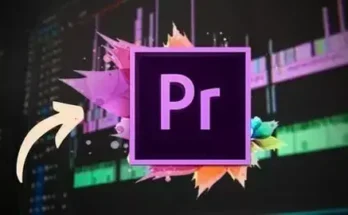Publisher: Truefire | Language: English
Video: MP4, 960×540 (16:9), 971 Kbps, 29.970 fps
Audio: MP3, 192 Kbps, 48 Khz, 2 channels
Size: 684 Mb
Liberate Your Rhythm Playing with an Unlimited Harmonic Palette
The tonal center of any chord progression is where you hear ‘Home’ or the resolution point of that chord progression. This resolution point is the key factor in understanding Modality, Blues harmony, and non-diatonic harmony.
In this Rhythm Edition of Robbie Calvo’s Tonal Freedom, you’ll learn how to play, create and analyze a variety of chord progressions, understand their harmonic structure, and identify their tonal center resolution.
Armed with this knowledge you’ll be able to create your own chord progressions, be able to instantly recognize the Tonal Center of other progressions and consequently, know how to apply the correct mode, scales, and arpeggios to create compelling melodic solos and improvisations.
”Having a solid understanding of Tonal Centers in any given chord progression is going to help you understand how to improvise correctly over that progression too. The 7 Modes of The Major Scale, for example, are simply 7 different resolution points within one key…we’ll be looking at 6 of those 7 resolution points and Tonal Centers within the Major Scale.
Outside of the Major Scale, we have Blues and Rhythm and Blues harmonic progressions that draw their chords from several different keys. Regardless of the chromatic nature of these progressions, you’ll still find that there is a Tonal Center resolution point to those progressions. We’ll also take a look at a typical Jazz progression to show how even the most complex progressions can be broken down into a series of Tonal Centers within a longer piece of music.”
In the first section of the course, Robbie presents a primer on Tonal Centers: What Are Tonal Centers?, Tonal Centers & Sweet Notes, Tonal Center Freedom, The 3 Types of Tonal Centers, Style & Genre Considerations, Course Materials & Analysis
Diatonic Major Progressions are the focus of the second section: Ionian Major, Lydian Major, and Mixolydian Dominant. The third section examines Diatonic Minor Progressions: Dorian Minor, Phrygian Minor, Aeolian Minor, and Locrian Thoughts
Non-Diatonic Progressions are studied in the fourth section: Rhythm & Blues Tonal Centers, Blues Tonal Centers, 8-Bar Dominant Blues, Minor Blues Tonal Centers, 12-Bar Minor Blues, Altered Dominant Tonal Centers, and Altered Dominant Funk. ii V I Progressions are presented in the fifth and final section of the course: Diatonic Jazz, Chromatic Jazz, and Descending ii V I Jazz.
All of the performance studies are tabbed and notated. You’ll have all of the backing tracks to work with on your own, plus you’ll be able to loop or slow down any of the videos so you can work with the lessons at your own pace.
Grab your guitar and let’s unlock your tonal freedom with Robbie Calvo!
[toggle title=”Home page”]https://goo.gl/G5LniW[/toggle]

http://alfalink.to/b344649af60a6ae5e72f
Please REPORT in Comment Broken Links




